Adjustable Rate Mortgages (ARMs) provide an alternative approach to home financing. Initially, these loans feature a fixed interest rate for a specific period, after which rates can fluctuate according to market dynamics. This article will clarify the mechanics of ARMs, highlight their advantages, and outline the associated risks.
Whether you’re entering the housing market for the first time or seeking knowledge, grasping the fundamentals of ARMs equips you to make informed decisions regarding your future home. Let’s explore the basics together.
Understanding Adjustable Rate Mortgages
An adjustable-rate mortgage (ARM) has a fixed interest rate for a specified period, typically between 5 to 10 years, after which the rate adjusts based on market conditions. This differs from fixed-rate mortgages, which maintain the same interest rate for the entire loan duration. Borrowers might opt for ARMs due to the lower initial payments, but they should consider the risks of increased monthly payments following the initial period.
Considerations include their budget, the home’s purchase price, the down payment size, and the possibility of rate caps that can limit payment increases. Interest rate adjustments are based on an ARM index plus the lender’s margin. Once the fixed period ends, if market rates increase, monthly payments can rise considerably, which could lead to challenges such as negative amortization.
It’s advisable for borrowers to consult a lending specialist for sound financial choices and to be mindful of any closing costs and mortgage insurance that could be associated with an adjustable-rate loan. Being aware of these factors helps in making informed decisions about financing options that fit personal circumstances.
Types of Loans in the Adjustable Rate Mortgage Category
1-Year Adjustable Rate Mortgages
A 1-Year Adjustable Rate Mortgage starts with a fixed interest rate for the first year, offering borrowers a lower initial monthly payment compared to fixed-rate mortgages. After this period, the interest rate adjusts annually based on market conditions and the ARM margin set by lenders. This means that payments could change, and if market rates increase, borrowers might face higher mortgage payments in future years.
Rate caps often limit how much the interest rate can increase each year, providing some predictability. However, borrowers should be cautious of potential negative amortization if payments do not cover the principal and interest. With lower initial payments, a 1-Year ARM can be a smart financial choice for those planning to move or refinance within a short timeframe. Still, they must consider closing costs and the possibility of increased payments in the future, especially if they decide to extend the loan term.
Understanding the adjustable rate adjustments and monitoring market trends can help borrowers make informed financial decisions.
5/1 Adjustable Rate Mortgages
A 5/1 Adjustable Rate Mortgage is an adjustable-rate mortgage where the interest rate stays the same for the first five years and then adjusts annually based on market conditions. This arrangement allows borrowers to have lower monthly payments initially, making home ownership more affordable. After the initial fixed period, the interest rate can increase, which may raise monthly payments and impact the overall budget.
Borrowers should understand how these adjustments might influence their finances, especially if rates rise significantly. It’s important for consumers to know about rate caps that limit how much their rate can increase with each adjustment to prevent situations where payments do not cover the principal. Homebuyers should consider their long-term plans and financial choices before opting for this loan type.
Additionally, they should take possible closing costs into account if they need to refinance or if they intend to sell before the loan period ends.
7/1 Adjustable Rate Mortgages
A 7/1 adjustable-rate mortgage stands out because it features a seven-year fixed interest rate before adjustments begin, unlike a 5/1 ARM with just five years or a 10/1 ARM with ten. This longer fixed period offers borrowers time to plan their financial decisions. After seven years, monthly payments can change based on market conditions, which is important for budgeting.
Borrowers must consider how much interest rates could rise after this time and factor in the ARM margin plus any rate caps. Choosing to invest in a home with a lower initial interest rate can help reduce early monthly payments, although potential increases can lead to higher mortgage payment amounts later on. Buyers should also think about closing costs and how changes in their purchasing power could affect their budget. Thoughtful planning around these elements helps borrowers manage their loan terms effectively, ensuring smarter financial decisions throughout the life of the mortgage.
10/1 Adjustable Rate Mortgages
A 10/1 adjustable-rate mortgage offers a fixed interest rate for the first ten years, unlike the 5/1 or 7/1 options which have shorter fixed periods. After the initial phase, the interest rate adjusts based on market conditions, using an index plus an arm margin set by the lender. As market interest rates rise or fall, the adjustments can significantly impact monthly payments after the fixed period ends.
Borrowers need to be cautious about the potential for payment increases, especially during periods of high interest rates. Choosing a 10/1 ARM may lead to lower initial mortgage payments compared to a fixed-rate mortgage, but it carries long-term risks. If rates rise, the monthly payment may become much higher after the initial fixed interest rate ends, possibly leading to negative amortization. This means that some borrowers could owe more than they initially borrowed if they do not plan their budget accordingly.
Understanding these financial decisions, including closing costs and down payment requirements, is important for making smarter financial decisions regarding home financing.
Key Components of an Adjustable Rate Mortgage
Interest Rate Adjustments
Interest rate changes in adjustable-rate mortgages rely on market conditions and the index chosen by the lender, along with the ARM margin. These changes usually take place after an initial fixed-rate period, which can range from 5 to 10 years. When the adjustments occur, monthly payments can vary widely, impacting the overall mortgage cost and possibly resulting in borrowers paying more principal than anticipated.
It’s important for borrowers to prepare for higher expenses by budgeting appropriately, as increasing interest rates might cause negative amortization if payments fall short of covering the principal. If borrowers find these changes challenging, they could look into refinancing to a fixed-rate mortgage, which would help them stabilize their monthly payments and prevent unexpected hikes. Engaging with a lending specialist might also be beneficial, as they can assist in making informed financial choices based on the borrower’s budget and purchase price.
Becoming aware of these factors can lead to wiser financial decisions when managing ARMs and their associated risks.
Annual Percentage Rate (APR)
The Annual Percentage Rate (APR) is significant for borrowers evaluating an adjustable-rate mortgage, as it encompasses the interest rate along with additional costs like closing expenses and mortgage insurance. Unlike the nominal interest rate, which merely indicates the interest incurred, the APR provides a more comprehensive view of the loan’s total cost throughout its term.
For instance, if an ARM features a lower nominal interest rate but higher closing costs, the APR could be greater than that of a fixed-rate mortgage with a slightly higher interest rate and lesser closing expenses. Grasping APR assists homebuyers in making informed financial choices by comparing various lending products. They can evaluate how different rates and terms influence their monthly payments and overall budget, ensuring their selected loan aligns with their financial situation.
By factoring in elements like rate caps and the ARM margin, borrowers can steer clear of negative amortization and gear up for potential increases in their mortgage payments when market conditions shift. This understanding empowers consumers to explore their options, enabling better selections regarding their purchase price and down payment.
Term Lengths
When selecting the term length for an adjustable-rate mortgage , borrowers must weigh various factors, including their budget, the home’s purchase price, and the possibility of rate changes. A shorter fixed interest rate period may offer lower initial monthly payments, but following that period, the interest rate will adjust according to market fluctuations.
Knowing how these adjustments work is important, as they may result in higher payments and even negative amortization if payment options cover only the interest. On the other hand, a longer fixed-rate period can ensure stability but may come with a higher overall interest rate. This decision affects financial planning, influencing both immediate and future strategies. Borrowers should also take into account down payment requirements and closing costs while managing their finances.
Consulting with lending specialists can help ensure that their choices support their long-term objectives, leading to more informed financial outcomes. Rate caps can restrict payment increases during the adjustable period, offering additional protection for borrowers worried about escalating costs.
Pros and Cons of Adjustable Rate Mortgages
Advantages of Adjustable Rate Mortgages
Borrowers can enjoy various financial advantages when opting for an adjustable-rate mortgage rather than a fixed-rate mortgage. The initial lower interest rate often results in reduced monthly payments, assisting buyers in adhering to their budget and making home purchases more feasible. For instance, a borrower may experience a considerable decline in monthly payments at the start, creating additional cash flow for other expenses or savings.
This lower initial rate typically lasts for the first few years, aiding consumers in managing their finances effectively during this period.
Moreover, ARMs provide a level of flexibility that fixed-rate loans often lack. Borrowers planning to move, refinance, or make other financial choices within the timeframe of a lower fixed interest rate can save money before their interest rates adjust according to market trends.
Additionally, many ARMs incorporate rate caps, which restrict how much the rate can rise over time. This feature helps borrowers predict their future mortgage payment responsibilities, allowing them to manage their finances more effectively and make informed financial decisions.
Disadvantages of Adjustable Rate Mortgages
Adjustable-rate mortgages carry certain financial risks for borrowers, especially during periods of rising interest rates. After the initial fixed interest rate expires, monthly payments can increase significantly, potentially straining a borrower’s budget. A spike in interest rates could result in high monthly payments and possibly lead to negative amortization, where payments do not cover the principal, increasing the total loan balance.
This uncertainty complicates financial stability, as borrowers must adapt their monthly budget to accommodate fluctuating costs. In comparison to fixed-rate loans, adjustable-rate mortgages may hinder long-term financial security by adding unpredictability to the loan timeline. With variable payments, borrowers may struggle to plan for future expenses, which can impact their overall financial choices.
Additionally, if refinancing becomes necessary, they may encounter closing costs or less favorable terms from lenders. Therefore, when assessing their purchase price and down payment, borrowers should carefully evaluate their options to ensure they make informed financial decisions that align with their long-term objectives.
Factors Influencing Adjustable Rate Mortgage Rates
Economic Indicators
Economic indicators, such as employment rates and inflation, assist banks and lenders in determining interest rates for adjustable-rate mortgages. A robust economy often leads to increased demand for homes, resulting in higher purchase prices and interest rates. Conversely, if economic indicators reflect slow growth, rates may decline, which can lead to lower monthly payments for borrowers.
These shifts can also affect the overall housing market; for instance, rising interest rates may create challenges for consumers in affording their mortgage payments, potentially resulting in more foreclosures and negative amortization situations. Lenders take these economic factors into account when evaluating risk for ARMs, as stricter conditions may lower the likelihood of default among borrowers. A lender might consider payment history and current market conditions while offering financing options and determining the ARM margin.
To navigate these economic factors effectively, borrowers should consult a consumer handbook for insights on mortgage insurance, down payments, and points associated with ARMs. By engaging with a lending specialist, prospective homeowners can make informed financial decisions regarding their mortgage choices, including fixed-rate loans versus adjustable-rate loans, ensuring they understand their options before finalizing any loan agreement with closing costs.
How Banks Use Adjustable Rate Mortgages to Make Money
Banks gain from initially low interest rates on adjustable-rate mortgages, attracting borrowers seeking affordable monthly payments. These lower rates encourage consumers to choose ARMs for home purchases with reduced down payments. As interest rates adjust over time, banks earn more from interest income compared to fixed-rate mortgages. When market rates rise, banks increase borrowers’ monthly payments, resulting in greater returns over the loan’s duration.
Many ARMs feature rate caps, providing protection to banks while offering borrowers some assurance. As payments change, banks may benefit when borrowers face negative amortization, leading to refinancing considerations with associated closing costs. With effective financial planning and guidance from lending specialists, consumers can manage these loans, while banks improve profitability through thoughtful lending products and informed financial strategies, all under strict editorial guidelines.
FAQ
What is an adjustable-rate mortgage, and how does it work?
An adjustable-rate mortgage has an interest rate that changes periodically based on market conditions. For example, a 5/1 ARM has a fixed rate for five years and then adjusts annually. It typically starts with lower rates, but potential increases could lead to higher payments over time.
What are the advantages and disadvantages of choosing an adjustable-rate mortgage?
Advantages of an adjustable rate mortgage include lower initial rates and potential savings if rates remain low. Disadvantages include the risk of increasing rates, leading to higher payments. For example, if rates rise after the initial fixed period, monthly payments could spike unexpectedly.
How often do the interest rates change on an adjustable-rate mortgage?
Interest rates on an adjustable-rate mortgage typically change every 6 months to 1 year after an initial fixed period. For example, a 5/1 ARM has a fixed rate for 5 years and then adjusts annually. Check your loan terms for specific adjustment details.
What factors should I consider before opting for an adjustable-rate mortgage?
Consider your financial stability, future interest rate trends, and how long you plan to stay in the home. For example, if you expect to relocate within five years, a lower initial rate might benefit you, but if rates rise, your payments could increase significantly after that period.
Can I refinance my adjustable-rate mortgage to a fixed-rate mortgage?
Yes, you can refinance an adjustable-rate mortgage to a fixed-rate mortgage. Shop around for lenders offering favorable rates, gather the necessary documentation, and apply for a new loan. For example, if rates are low, consider locking in a fixed rate to secure long-term stability.
Explore the world of adjustable-rate mortgages (ARMs) with Champions Mortgage. Understand how ARMs can offer lower initial rates and monthly payments, making them an attractive option for certain financial strategies. Contact us today to learn more about how ARMs work and whether they’re the right choice for your homebuying journey.







